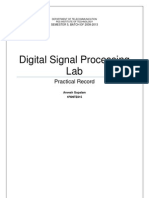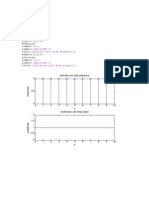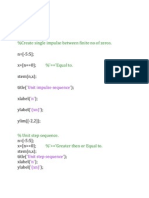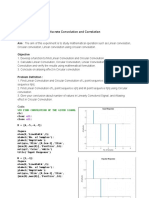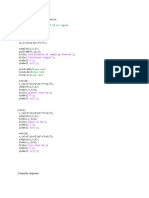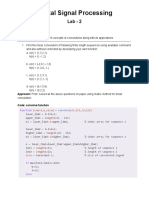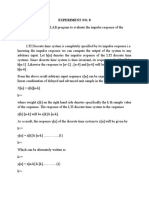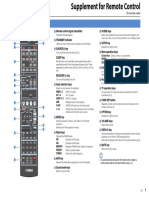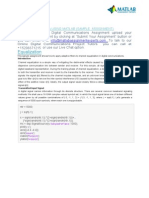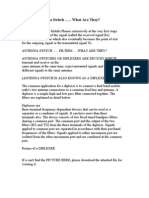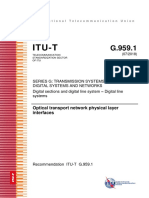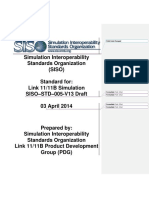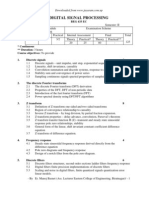0% found this document useful (0 votes)
35 views38 pagesDSP Lab Programs
The document outlines various experiments involving Linear and Circular Convolution, Autocorrelation, Cross Correlation, and the Discrete Fourier Transform (DFT) and its inverse (IDFT). It includes MATLAB code snippets for each experiment, detailing the input sequences, coefficients, and the resulting outputs, along with graphical representations. The experiments demonstrate key concepts in signal processing, including impulse and step responses, sampling theorem, and correlation techniques.
Uploaded by
shashiphdCopyright
© © All Rights Reserved
We take content rights seriously. If you suspect this is your content, claim it here.
Available Formats
Download as PDF, TXT or read online on Scribd
0% found this document useful (0 votes)
35 views38 pagesDSP Lab Programs
The document outlines various experiments involving Linear and Circular Convolution, Autocorrelation, Cross Correlation, and the Discrete Fourier Transform (DFT) and its inverse (IDFT). It includes MATLAB code snippets for each experiment, detailing the input sequences, coefficients, and the resulting outputs, along with graphical representations. The experiments demonstrate key concepts in signal processing, including impulse and step responses, sampling theorem, and correlation techniques.
Uploaded by
shashiphdCopyright
© © All Rights Reserved
We take content rights seriously. If you suspect this is your content, claim it here.
Available Formats
Download as PDF, TXT or read online on Scribd
/ 38
